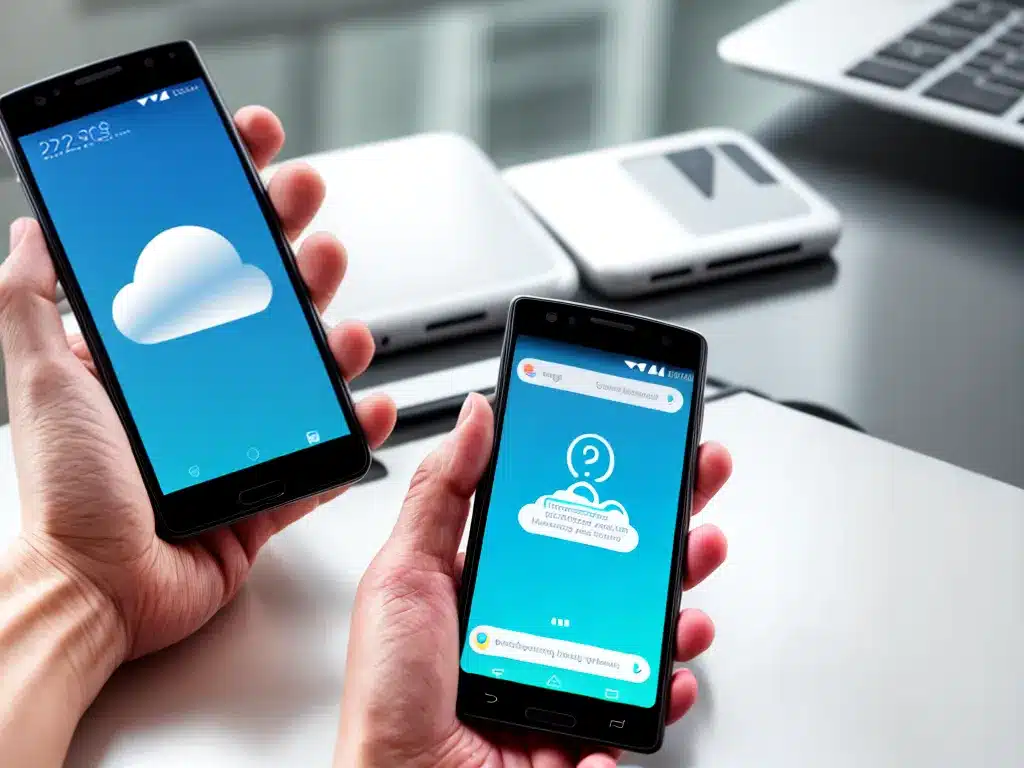Backing up an Android smartphone to the cloud is a simple process that protects your data and keeps it synced across devices. Here is a step-by-step guide to backing up an Android phone to the cloud:
Choosing a Cloud Storage Service
The first step is selecting a cloud storage service to backup your data. Here are some top options to consider:
-
Google Drive – Android’s built-in option that gives you 15GB of free storage. Easy to set up and integrates with Android’s backup features.
-
Dropbox – Popular file hosting service with 2GB of free storage. User-friendly interface and apps for all platforms.
-
Microsoft OneDrive – Integrates nicely with Windows and gives you 5GB of free storage. Also works great on Android.
-
Apple iCloud – Best if you use iCloud on another Apple device. Gives you 5GB of free storage. Only compatible with Android 9 and up.
I recommend Google Drive for most Android users because of its tight integration and free storage space. But any of these options will work fine.
Enabling Backup on Your Android Device
Now it’s time to turn on the backup function on your Android. Here’s how:
On Android 9 and Up
- Go to Settings > System > Backup.
- Turn on Back up to Google Drive.
- Customize backup options like backup frequency, app data, SMS messages, etc.
On Android 6 to 8
- Open Settings > Backup & reset.
- Toggle on Back up my data and Automatic restore.
- Tap Backup account and select Google Drive if not already chosen.
That’s it! Android will now periodically back up your important data like contacts, apps, settings, SMS, and more.
Restoring Data from the Cloud
The main benefit of cloud backups is being able to restore your data when needed. Here are steps to restore from Google Drive:
- On your new Android device, open Settings > System > Backup.
- Tap on your Google account under Backup account.
- Turn on Automatic restore and confirm.
Your synced data like WiFi passwords, apps, and settings will automatically restore onto your device. You can also manually restore contacts, photos, or other data if needed.
Automating Backups with Google One
For seamless automated backups, consider upgrading to a Google One paid plan. Benefits include:
- More storage space like 100GB for $1.99/month.
- Phone backup enabled automatically. No setup needed.
- Data like photos, contacts, messages stored at original quality.
- Automatic phone backups even when device is sleeping.
- Share plan storage with family members.
While Google Drive works fine for free, Google One ensures your Android data is continuously protected. The peace of mind is worth the small monthly cost for many users.
Tips for Successful Android Cloud Backups
Follow these tips for a smooth backup experience:
- Maintain a stable WiFi or mobile data connection for backups.
- Plug phone in for charging at night when backups occur.
- Disable battery optimizations for backup apps like Drive.
- Review backup settings occasionally for desired frequency.
- Monitor cloud storage usage and upgrade if needed.
- Set app-specific backups like WhatsApp if desired.
Conclusion
Backing up an Android phone to the cloud is simple with built-in tools like Google Drive, automated backups, and easy restoration when needed. With your data protected in the cloud, you have peace of mind if you ever lose your device or need to restore data on a new phone. Just remember to configure backups, review settings periodically, and upgrade storage if needed.













